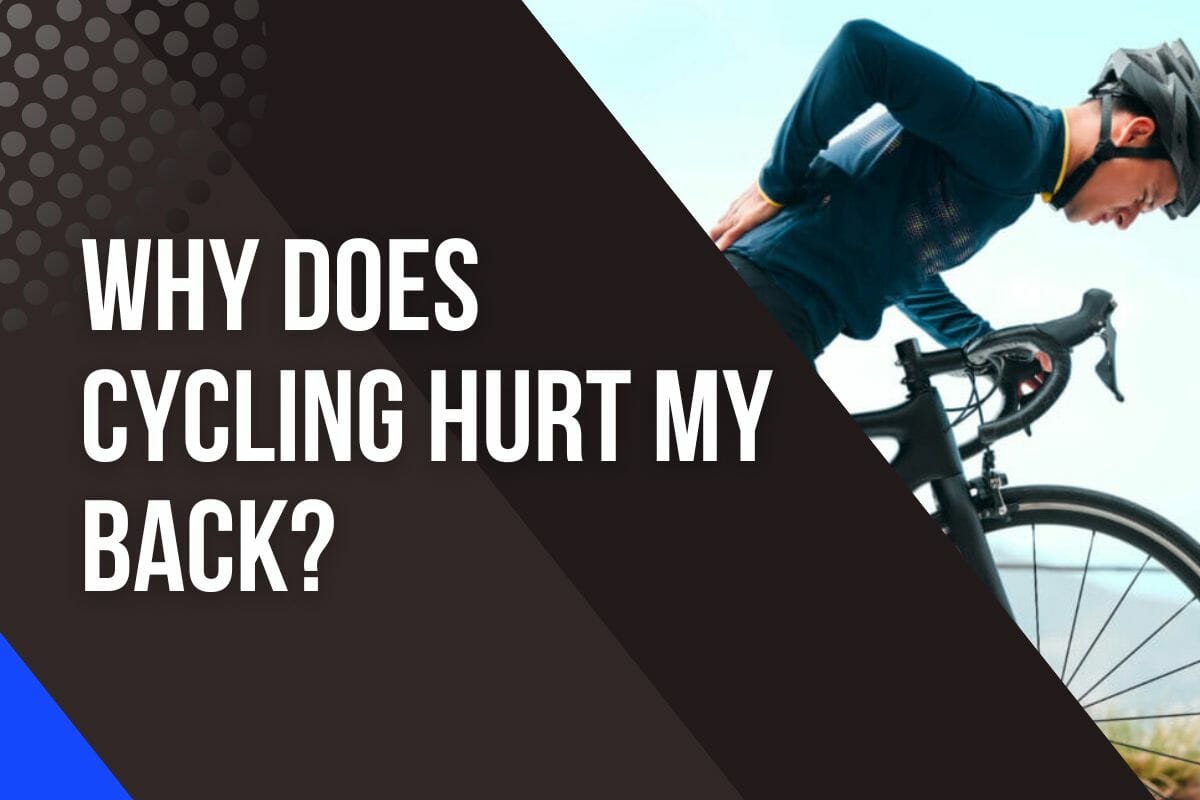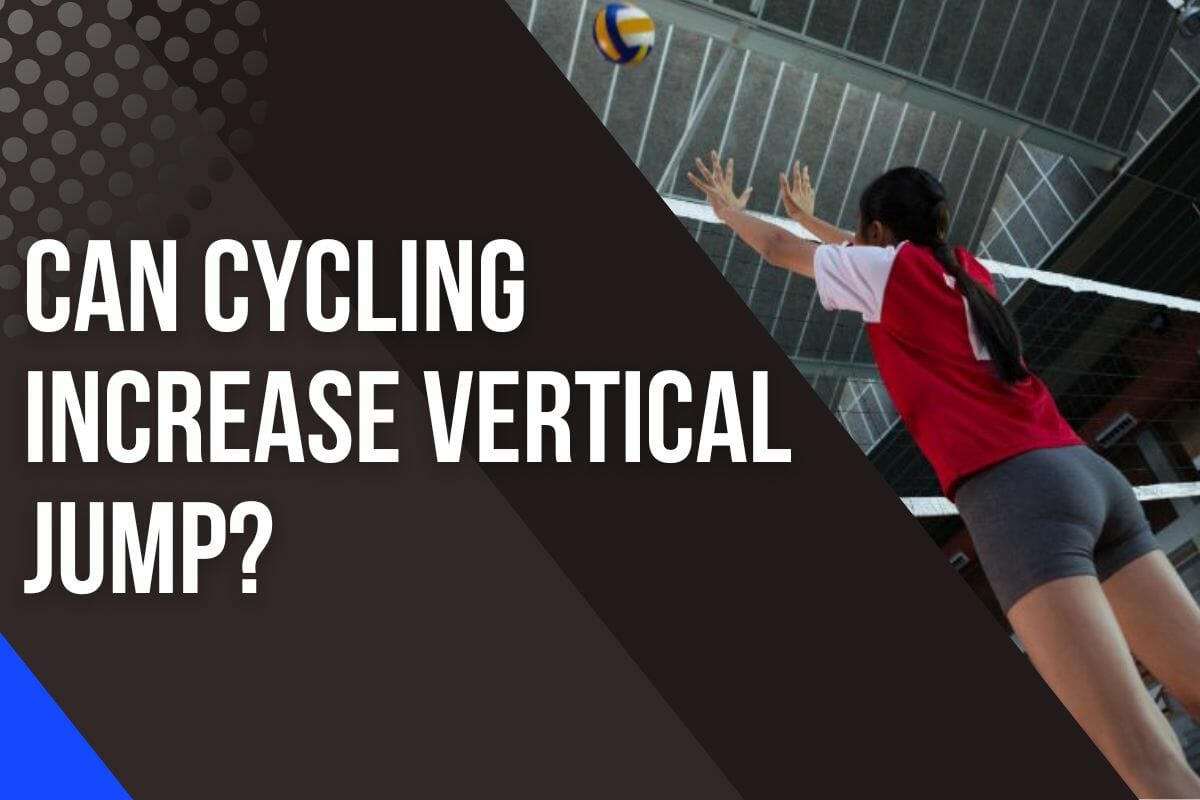3 Tips To Prevent Back Pain When Cycling

Picture yourself riding your bike on a sunny day, feeling the sun on your back and wind in your hair. You feel free and alive as you pedal along the smooth path.
But suddenly, something changes: pain starts to build in your lower back.
The ride that was once filled with joy is now full of discomfort – why does cycling hurt my back?
Cycling can hurt your back if you improperly set up your bike. Lack of core muscle strength, inadequate warmups, and poor posture habit can also lead to cycling related backpain.
Well, you’re not alone. I’ve been cycling for more than 10 years and back pain is a common issue worldwide, including in the cycling community as well. The good thing is, there are easy and practical ways to treat it.
Below, I’ll explain what may be causing backpain as well as looking at ways to prevent and how to treat them if you’re already feeling a bit sore.
In a hurry? Jump directly to the three easy practical steps to prevent cycling related back pain.
What Causes Back Pain During Cycling
“No pain, no gain,” the old adage goes. As a cyclist, it’s key to have knowledge of the causes of our backaches to be able to ride with ease.
According to a study, 40% of all cyclists are having back pain issue. (1, 2)
There are many potential culprits that can be at play. For starters, an improper bike fit may be causing your body undue strain while riding.
The same goes for a lack of core strength; if your torso isn’t properly supported by strong abs and lower back muscles during pedaling, then your spine won’t have adequate support throughout the entire range of motion.
Furthermore, inadequate warmups or cool downs could also lead to tightness in the hips and shoulders—which can contribute to tension elsewhere along your spine.
Overtraining can become a problem too.
Without proper rest days or recovery activities such as stretching and foam rolling, fatigue will quickly set in which increases the risk of injury from sudden movements or awkward postures on the bike seat.
Even more insidious are hidden issues like long hours spent sitting at work each day combined with poor posture habits that could potentially create chronic pain problems down the road.
It’s important for us all to recognize these various possibilities so we can take proactive steps towards preventing any future cycling-related backaches and pains.
Let’s now investigate further what else might be contributing to this common cyclist complaint.
Investigating The Causes of Cycling-Related Back Pain
Investigating the causes of cycling-related back pain is like trying to solve a complex jigsaw puzzle.
It’s important to look at the whole picture when evaluating why riding is painful for you.

While some physical elements might appear obvious, other parts such as emotional state and lifestyle habits should also be considered.
With this holistic approach, you will be better equipped for identifying practical ways to reduce your risk of experiencing back pain while riding.
Practical Tips To Prevent Cycling-Related Back Pain
Fortunately, there are some useful yet simple strategies for preventing cycling-related back pain.
1. Set Up Your Bike Properly
When adjusting your saddle height, seek a level that allows for proper leg extension without overextending your lower back.
Then, optimize the handlebar height for your flexibility, riding style, and comfort. Be sure to keep your upper body relaxed, and not reach too far or bend over too much. (3)

You also want to wear cycling shoes that provide the proper support for your feet and ankles, which can help you maintain the proper posture.
Make sure your cleats are positioned correctly to avoid hip rotation.
If you want to go one step further, consider getting a professional bike fitting from a certified bike fitter who can help you adjust your bike according to your unique anatomy and riding style.
2. Taking breaks throughout long rides
Sitting in the same position for an extended period can put pressure on your back, hips, and other muscles, causing pain.
Taking a break and changing positions will give your body time to rest and recover before getting back on the bike again.
This helps ensure that you’re not overworking any particular muscle group or putting too much strain on specific joints or ligaments as you cycle.
Make sure to stretch your muscles during a break to prevent tightness and pain in your back and other areas.
3. Build strength and flexibility in relevant muscle groups
Having a strong core and gluteal muscles can help keep your posture steady while cycling, which reduces stress on the lower back. (4)
Additionally, incorporating regular stretching into your routine can help reduce tightness in areas like the hips and hamstrings that contribute to cycling-related discomfort.
Here are 5 simple and easy exercises you can mix and match to get noticeable improvements in your core stability and flexibility.
Hamstring Stretch
Start in a seated position with one leg straight and the other bent with the foot flat on the ground. Lean forward, keep your back straight, and reach for your toes.
Hold the stretch for at least thirty seconds before switching sides.

Cat and Cow Stretches
Start on your hands and knees. Inhale and arch your back, lifting your chin and tailbone up towards the ceiling.
Exhale and round your back, tucking your chin and tailbone towards the floor.
Repeat this five to ten times.

Glute Bridges
Lie on your back with your knees bent and feet flat on the ground. Lift your hips off the floor and squeeze your glutes as you lift.
Hold for a few seconds before lowering your hips back down.
Repeat this ten to fifteen times.

4. Single Leg Deadlifts
Stand with your feet hip-width apart and hold a dumbbell in one hand. Keeping your spine straight and core tight, hinge forward and lift the opposite leg behind you.
Keep your back flat as you lower the dumbbell toward the ground and raise your leg. Return to the starting position and repeat on the other side.
It’s not as hard as you think. Even a pregnant woman can do it!

5. Planks
Get into a push-up position, but rest on your forearms instead of your hands. Keep your body in a straight line, squeezing your glutes and engaging your core.
Hold this position for 30 to 60 seconds.

Treating Cycling-Related Back Pain
Treating cycling-related back pain typically begins with lifestyle changes – such as regular stretching and other exercises that strengthen the core muscles – but it doesn’t stop there.
In addition, you should consider massage therapy to promote the circulation of blood throughout the body, reduce inflammation and improve the range of motion. (5)
Another form of relief may be found through chiropractic care which focuses on realigning joints in order to restore natural balance within the body. (6)
Beyond physical treatments, mental health plays an important role too.
It’s crucial for athletes to focus on self-care practices such as mindfulness or meditation to remain relaxed while out on the bike and prevent tension from building up during long hours of training.
By following these simple tips for treating cycling-related back pain, you will be well-equipped to get back out onto the road again – stronger than before!
When To Seek Professional Help For Back Pain From Cycling
If you’re experiencing any discomfort while participating in the activity, it’s recommended to seek professional help before the pain gets worse.
Here are some indications to know when it may be time to take your cycling-related back pain to an expert:
- If there is severe or chronic pain that does not improve over time;
- If the affected area feels warm and swollen with no relief from rest or ice;
- If numbness and tingling occur in addition to the pain.

When any of these three symptoms arise during or after a ride, it’s likely best to get checked out by a specialist who can accurately assess your situation.
Your doctor will most likely provide specialized exercises tailored specifically to your needs and suggest proper bike setup adjustments to prevent further injury.
Also, they may recommend supplements such as glucosamine/chondroitin sulfate which have been proven effective at reducing joint inflammation associated with cycling injuries.
By staying proactive about addressing cycling-related back pain early on, you can avoid more serious problems.
Taking preemptive steps now will ensure that you stay healthy and enjoy biking even more!
Over To You
As they say from antiquity: “an ounce of prevention is worth a pound of cure”.
That said, choosing and setting up a bike that fits your body to reduce back pain while cycling is important.
Exercising and training your core muscles will also help support your spine while riding.
Cycle regularly but not excessively – no more than two or three times per week should be sufficient for most people.
Having the right type of shoes when cycling can also make a big difference in relieving any aches or pains.
Finally, wearing specific apparel designed specifically for cyclists with built-in padding may help ensure maximum comfort and reduce backache during rides.
Whether you’re an amateur or professional cyclist, taking care of your back by following these simple tips can go a long way towards ensuring a comfortable ride every time without sacrificing any of the fun!
Frequently Asked Questions
Want to know more about how to prevent cycling-related back pain? Here are four common questions and answers.





